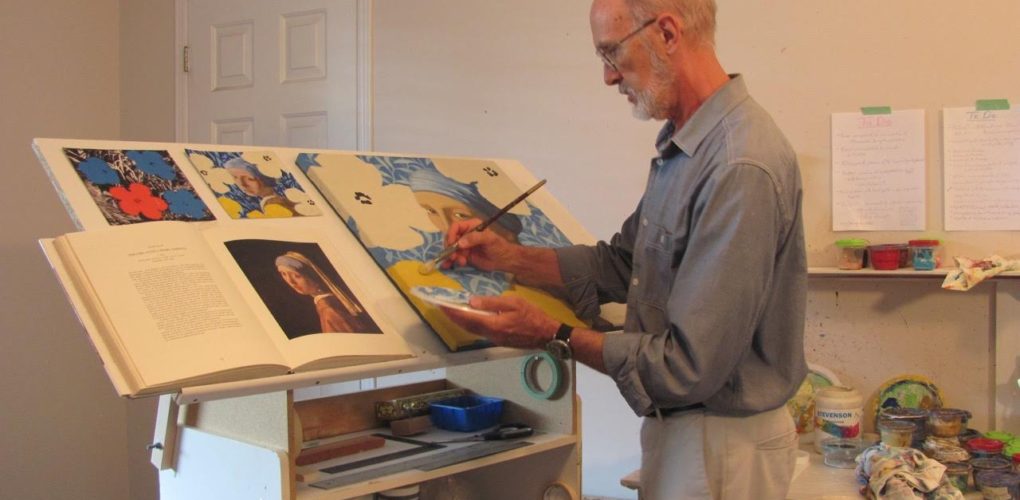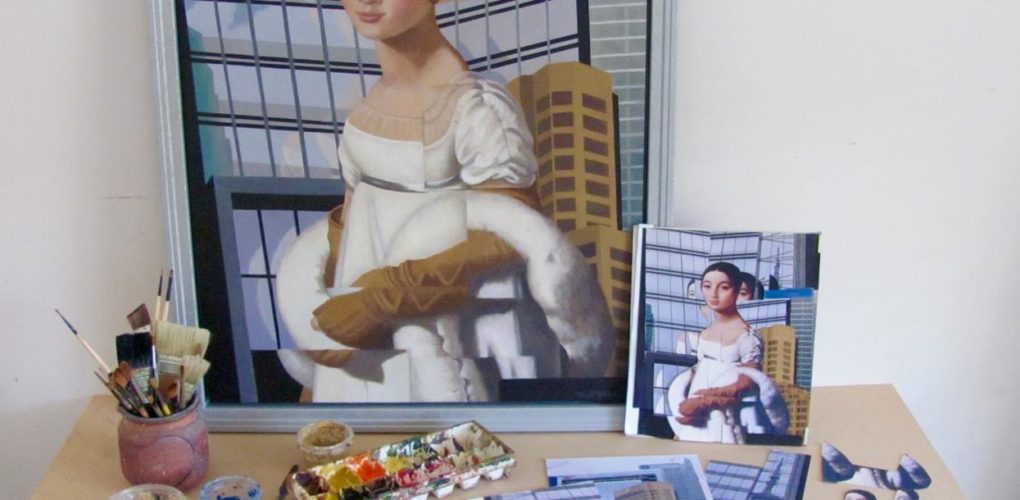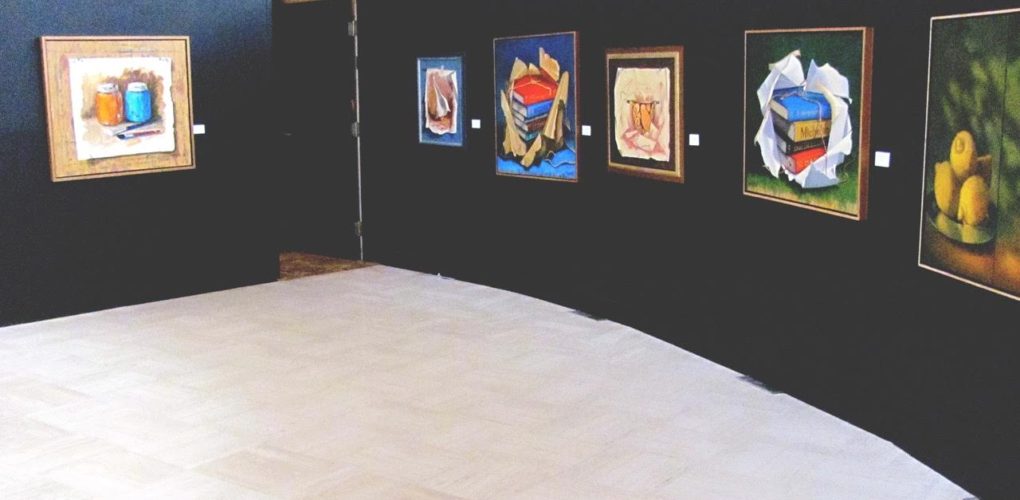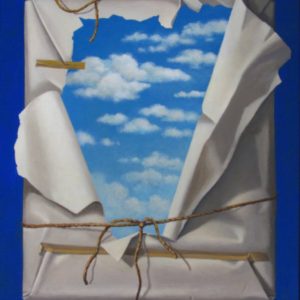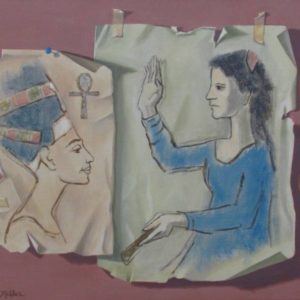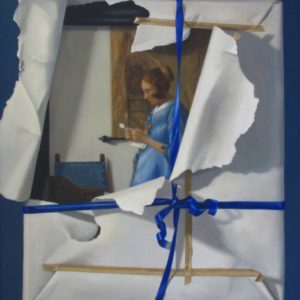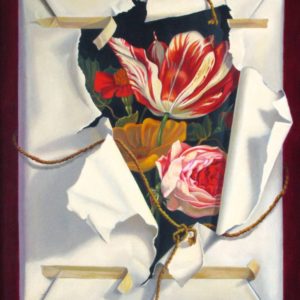Inside the Studio
 Tom Miller
Tom Miller
What are the major themes you pursue in your work?
I am fascinated and inspired by historic works of art and artifacts including paintings, sculpture, and pottery. I enjoy placing historic images in a new context, thus bringing past and present together in a new interpretation and paying homage to artworks I admire. Altering an image and its context references the theme of the passage of time and the way our understanding of the meaning of images evolves and changes. This process jars the artist and viewer out of their accepted interpretation and makes it possible to see the images with fresh eyes. The most radical process I use involves cutting up paper prints of a painting and reassembling the pieces into a photo collage. The collage then serves as the sketch for the painting and as I paint further alteration are made to the image.
This process is similar to the way classical and jazz musicians make variations on an old melody to create a new musical composition. The multiple viewpoints and dislocations add the element of movement to the original, static image. This is rather similar to the way images were transformed by cubist artists. These shifting planes also reference the way our eyes see an image. Normally when we look at an image the eye is in constant motion and this happens so quickly that we think we are seeing the whole image all at one glance. But just stare at a fixed point in a painting and you will notice the rest of the painting is out of focus. So our eyes are constantly piecing the visual world together with many small movements. Sometimes I make one of my unwrapped images, usually of another painting or piece of pottery, as a metaphor for my delight at discovering a new work of art. Opening a present is something we have all experienced and it is usually a surprising and pleasant event. Finding a special, new work of art in a gallery or museum is always exciting and delightful. I hope my altered images will encourage the viewer to contemplate the richness of our artistic heritage and continue to explore the world of art.
What was the best advice given to you as an artist?
Spend at least as much time just looking at your painting as you do in actually painting it. The act of painting is very intuitive and sometimes intuition needs correction. The more complex the painting the truer this is. Often my paintings develop over time, sometimes weeks, even years. The more I look the more I see. Getting it just right is what matters.
Do you prefer to work with music or in silence?
When I am beginning a painting and making the first critical decisions about drawing and composition I prefer to work in silence. Then as the painting develops I enjoy listening to classical guitar music, the piano works of Maurice Ravel and Erik Satie, and anything by J. S. Bach. Recently I discovered the Canticles of Ecstasy by Hildegard von Bingen which is an especially contemplative, other worldly music.
What one piece of art is a special favourite?
THE ALLEGORY OF PAINTING by Jan Vermeer. In this painting Vermeer presents an artist painting Clio, the Muse of History. The painting seems to be about the historical and cultural importance of the art of painting, and the central role of artists in shaping our sense of history.
Who are your favourite writers?
Over many years my favourite writers have included Charles Dickens, Margaret Atwood, Robertson Davies, and John Grisham.
